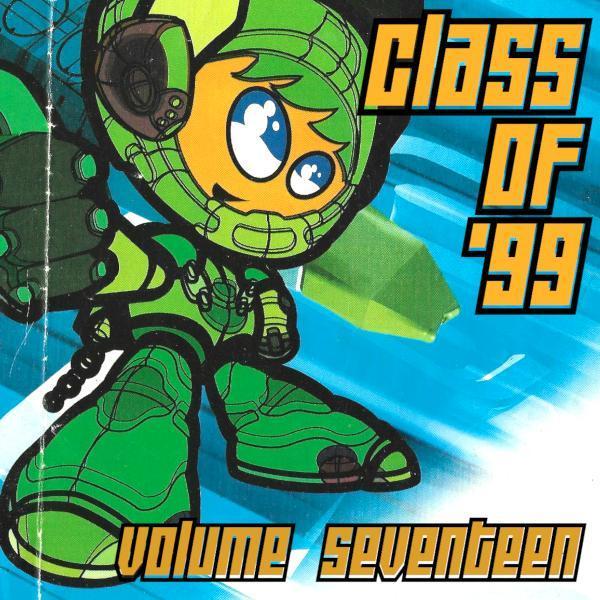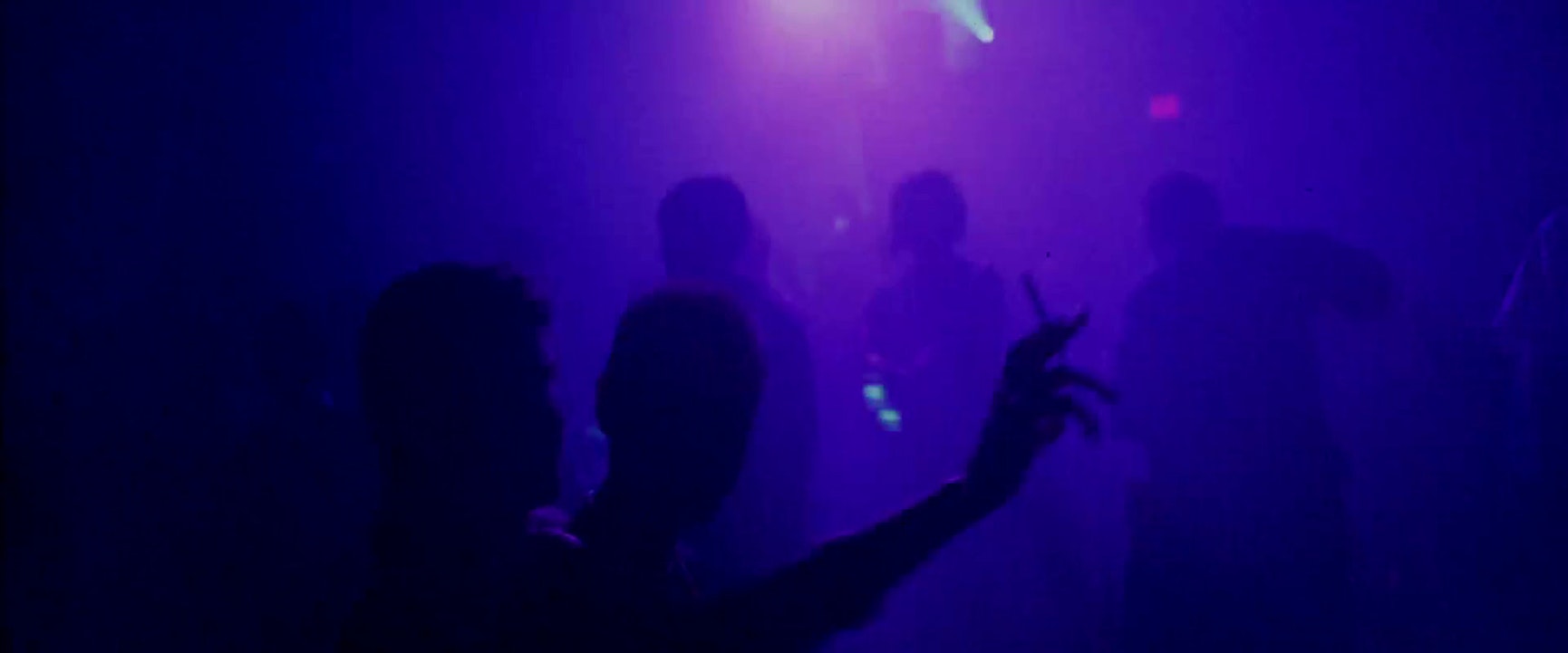Class of ’99, Vol. 17

What killed the rave scene?
Several factors contributed to rave’s decline in Chicago and throughout North America, but the biggest was probably the epidemic of drug abuse. The late ’90s saw the rise of GHB, or “liquid-G” as a fashionable designer drug. I even knew a kid named Jesús who started spinning under the moniker “Liquid G-sus,” which he thought was really cool but we all ended up calling him “Liquid Jesús” in the Spanish pronunciation, and the nickname stuck. Anyway, liquid G spiked both in popularity and in notoriety as a “date rape drug.” It definitely seemed to affect girls differently than boys, and claimed a series of female casualties. One such victim was a teenage girl named Laddie, who, in 1999, dropped some liquid G at a party on the south side, overdosed, and had to be rushed to the hospital.
This would prove to be the most consequential incident in the downfall of Chicago raves: as it turned out, Laddie’s father was Richard M. Daley, the mayor of Chicago! After this, our fate was cast.
Chicago began drafting ordinances and legislation to effectively ban raves, with the surrounding municipalities following suit. We knew it was coming, and tried to organize against it, with an organization called CEMA, or Chicago Electronic Music Alliance—organized by myself and my best friend, Matt; Chris Gin, from Thousand Words magazine; a representative from the National Academy of Recording Arts and Sciences (of Grammys fame); and others. CEMA arranged a meeting before of City Council, and we assembled a group of speakers to testify on our behalf which included legendary house producer Steve “Silk” Hurley. But Chris wanted at least one party promoter represented at the meeting, which I strongly recommended against. Still, against my better judgement, I started reaching out to promoters for support.
Because of the outlaw nature of raves, it naturally followed that the most successful promoters were notoriously shady, often connected to drug dealing and organized crime. The average promoter wasn’t pulling permits, or paying taxes, or playing by any of the rules—making him the worst possible liaison to an already-hostile administration.
I happened to know these two promoters who were sisters. They lived at home in a big mansion in the exurbs, their father was a mafia pimp, and they had a high profile in the rave game. The elder sister agreed to speak at city hall and it went about as well as I assumed it would: she used the floor to brag about herself, came across as the racketeer she essentially was, and made the rest of us look bad. With a combination of prohibitively stringent standards, unobtainable permits and harsh penalties for non-compliance, the city council regulated raves out of existence in May of 2000.
The Aftermath
Once outlawed, former rave atendees went in two directions: into the clubs, and into the lofts. Somehow, Matt got a bare-bones industrial pad in Fulton Market back when it wasn’t even zoned for residential habitation and the whole neighborhood reeked of livestock. He lived there with several other guys and they threw parties together to make rent.
In 2001, Chicago passed a law that if you had more than 15 pills of ecstasy on you, you could go to prison for 30 years. Nevertheless, one of Matt’s roommates got the bright idea to fly to Amsterdam and FedEx a jar full of pills to his own address. Since they were living in what was supposed to be a vacant building in the meat packing district, FedEx assumed the address was wrong and then re-routed the package to their central facility downtown. Fearing that the contraband within the undeliverable parcel would end up in the hands of the auhorities, the panicked roommate convinced him to go downtown and claim it in person. Matt said it was one of the most anxiety-inducing things he had ever done, and he was sure that when he reached out to receive the box he would get the handcuffs. Instead, he received the package without incident.

About the cover
This graphic comes from a flyer for a 1998 party called Step Into A World.


Track List
Follow these links to read more about the selections:


Sunburst Band — Monte Carlo (1998)
Here’s another offering from the essential quadruple-LP Mad Styles And Crazy Visions, compiled by Masters At Work’s Little Louie Vega.
“Monte Carlo” is basically a rework of “To Be In Love” by MFSB, from the Gamble-Huff Orchestra album


Green Velvet — Never Satisfied (Studio 54 re-rework) (1997)
Green Velvet teams up with Studio 54 for this release.
“Never Satisfied” samples “You’ll Never Find Another Love Like Mine” by Lou Rawls, from the album All Things In Time.



Kristine Blond — Love Shy (1998)
Classic vocal house from the UK. This single is available on Discogs.


Todd Edwards — Never Far From You (1998)
This single comes from the incomparable Todd Edward and was released on Newark’s i! records.
“Never Far From You” samples “Summer Days” and “Stop Look Listen” by Angela Bofill, from the albums Angie and Something About You.


UBQ Project — Needin U (1995)
Another single from Chicago’s UBQ Project on the legendary Vibe/Music Plant label. “Needin U” samples “My First Mistake” by The Chi-Lites, from the album The Fantastic Chi-Lites.


Tiko — Everybody Shine (1999)
I was a huge fan of Basenotic’s third Bakchich EP. Volume 4 wasn’t as great, in my opinion, but this was the highlight. This record was very important to my friend Leann, who said it was the first record she bought as a DJ. Her brother, Jesse De La Peña, was well known in Chicago. Leann passed away in early 2020, right before the world changed forever.
“Everybody Shine” samples “Shining” by Venus Dodson, fron the album Night Rider.


Second Crusade — May The Funk Be With You (1996)
Both sides of this record are outstanding in their own ways, the flipside appearing on Volume 12 of this series.
“May The Funk Be With You” samples “Intergalactic Love Song” by Charles Earland, from the album Odyssey, as well as “May The Funk Be With You” by Denise La Salle, from the album I’m So Hot.



Smokin Beats — Come On And Boogie With Me (1996)
This effort from England’s Smokin Beats comes from the E.P. Lessons In Disco II.
“Come On And Boogie With Me” samples “Baby Baba Boogie” by The Gap Band, from their self-titled album.


Studio 54 — Freak It (1998)
This tune, from Studio 54 Vol. 3, was probably their biggest hit. Did it really need its own video? What is even happening in this video?


BT Express — At The C!sa (1997)
Classic hard house record from Chicago. “At The C!sa” samples “Copacabana” by Barry Manilow, from the album Even Now.


Todd Terry — Jumpin (1993)
This is the original release of Jumpin’. The Rhythm Master’s mix was released on a later LP and became a huge dancefloor hit. It didn’t add anything valuable to the orginal, though, and just smeared gross speed garage all over the track.
“Keep On Jumpin” by Musique, which you can get on the Jumpin complilation.


Earth People — Dance (1990)
This was the oldest record in my house bin, and the oldest in this series. It sounded ahead of its time and lasted throughout the 90s without ever sounding outdated.
“Dance” samples “I Was Born This Way” by Carl Bean and “Dance, Dance, Dance” by Chic.


Todd Edwards — Saved My Life (Let's Begin mix) (1995)
Todd Edwards was peerless in the quality of his releases, and this one is no exception. “Saved My Life” samples quite a few records, including “Last Night A DJ Saved My Life” by Indeed, “You Should Be Dancing” by The Bee Gees, “Remember Me” by Diana Ross, “Leave It All Up To You” by The Staple Singers, “If I can’t Have You” by Yvonne Elliman, and probably others I’m missing.


DJ Sneak — You Can't Hide From Your Bud (1997)
DJ Sneak’s biggest hit. Every DJ seemed to have this record. Produced in Sneak’s typically lazy fashion, I don’t think the crashes are even timed out properly so you don’t really know where to cue this up.
“You Can’t Hide From Your Bud” samples “You Can’t Hide From Yourself” by Teddy Pendergrass, from his self-titled LP</a?.


Trouble Men — Do It (1998)
Trouble Men sure liked to put topless black women on their records, as with this one. “Do It” samples “Do What You Wanna Do” by T-Connection, from the album Magic.


Cricco Castelli - What's The Message (1998)
Another cut from Castelli’s Thank God It’s Funky LP. “What’s The Message” samples “Love Is The Message” by MFSB, from the album of the same name.
